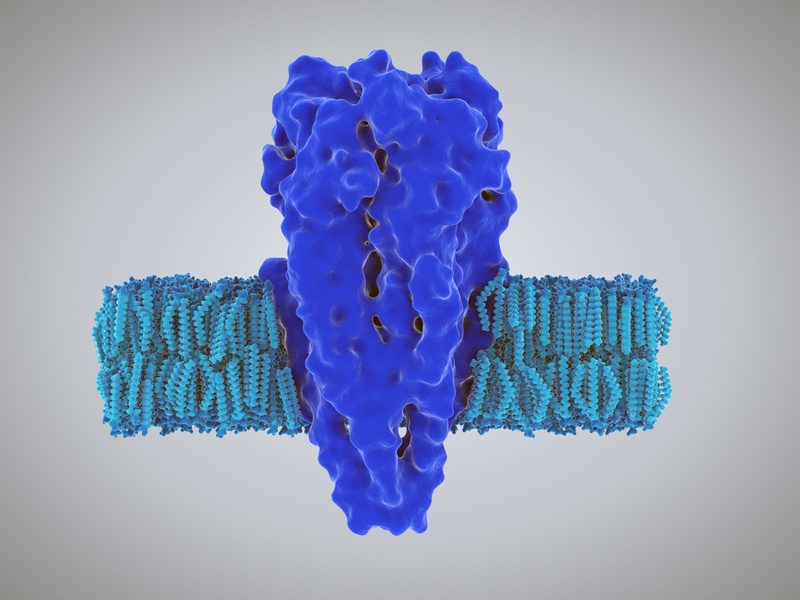Kv1.3 channels are expressed in T-cell lymphocytes and over-expressed in autoimmune diseases. They can be see as a therapeutic taget for T cell mediated autoimmune diseases.
ShK toxin (Stichodactyla helianthus neurotoxin) can be isolated from the venom of the Carribean sea anemone Stoichactis helianthus. Wild-type ShK toxin blocks potently Kv1.3 (KCNA3), Kv1.1 (KCNA1), Kv1.4 (KCNA4) and Kv1.6 (KCNA6) ion chanels with a Kd value of 11 pM, 16 pM, 312 pM and 165 pM, respectively. (Beeton et al., PNAS 103 (46): 17414–19 (2006))
Recently, Smartox Biotechnology, a biotech company specialized in venom-derived toxins which usually act as ion channel modulators, have developed a fluorescent toxin for ion channel studies.
A fluorescent labeled ShK toxin: TMR ShK
This fluorescent (red) version of the ShK toxin allows to localize the ion channel by confocal microscopy, or to discriminate between cells overexpressing or not Kv1.3 by FACS with higher sensitivity than an anti-Kv1.3 fluorescent antibody.
TMR-ShK blocks Kv1.3 at picomolar concentrations with a Hill coefficient of 1 and exhibited >80-fold specificity for Kv1.3 over Kv1.1 and other K(V) channels. In FACS experiments, it specifically stains Kv1.3-expressing cells with a detection limit of approximately 600 channels per cell (Beeton et al., J Biol Chem. 278 (11): 9928-37 (2003)). It can be used to identify lymphocytes expressing Kv1.3 channels such as effective memory T cells (TEM) in the case of autoimmune diseases (type 1 diabetes, mellitus or rheumatoid arthritis) which overexpress Kv1.3 channels.
TMR ShK toxin can thus be of interest for researchers using conventional immuno-assays.
What about you?
A wide range of synthetic ion channel modulators is now available. What about you? Which ones are you using?


